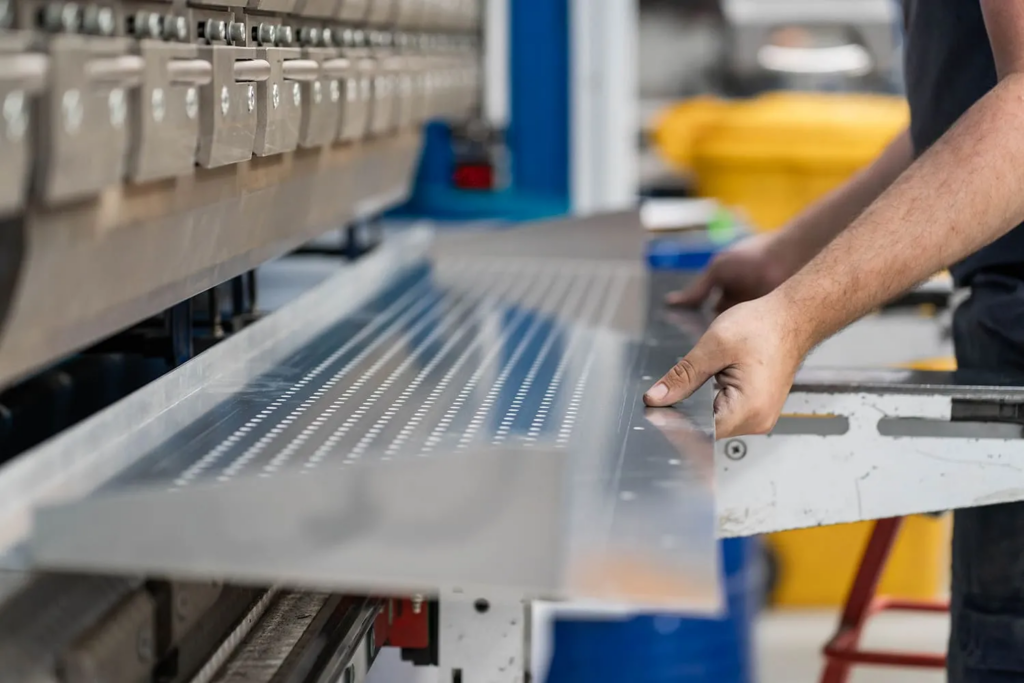
Aluminium is one of the most versatile metals, used across industries from construction to electronics. But have you ever wondered how those aluminium sheets you see in stores are made?
This process, from extracting raw materials to producing smooth, workable sheets, involves a number of steps that ensure the metal is lightweight, durable, and ready for various applications. Let’s break down the manufacturing process and learn what goes into making aluminium sheets.
1. The Extraction of Bauxite
The journey of aluminium sheets starts with bauxite, the primary source of aluminium. Bauxite is a type of rock that contains high amounts of aluminium oxide. Most of the world’s bauxite deposits are located in tropical and subtropical regions like Australia, Brazil, and Guinea.
Australia is actually the leading producer of bauxite, and this raw material is crucial for producing aluminium. Once the bauxite is extracted from open-pit or strip mines, it undergoes a process called refining to separate aluminium oxide from other components in the rock.
2. Refining: The Bayer Process
After mining, the bauxite undergoes refining through the Bayer Process, which involves crushing the bauxite and mixing it with sodium hydroxide. This chemical reaction dissolves the aluminium oxide, leaving behind a mixture of impurities, called red mud. The aluminium oxide is then separated, filtered, and heated in a kiln to remove any water, forming a fine white powder known as alumina.
This alumina is not yet aluminium but is a key ingredient in producing it. The next step involves converting this alumina into molten aluminium.

3. Smelting: The Hall-Héroult Process
Smelting is the process that turns alumina into aluminium. This is done through a method called the Hall-Héroult process, named after its inventors. In this process, alumina is dissolved in molten cryolite, and a strong electrical current is passed through the solution. The electrical current breaks the chemical bonds in the alumina, separating pure aluminium from oxygen. This molten aluminium collects at the bottom of the smelter, where it is periodically siphoned off.
The resulting aluminium is around 99.8% pure and can be further refined to remove any remaining impurities. After this, the aluminium is ready to be cast into ingots, billets, or large blocks for further processing.
4. Casting Aluminium Ingots
The molten aluminium is poured into moulds to create large blocks or ingots, which can weigh several tonnes. These ingots are then transported to rolling mills, where they undergo further processes to become sheets of aluminium. At this stage, the metal is still thick and requires several rolling processes to thin it down to the desired thickness.
5. Rolling the Aluminium into Sheets
Once the aluminium ingots are ready, they’re taken to rolling mills. This is where the aluminium sheets begin to take shape. The ingots are heated and passed through a series of rollers that gradually reduce their thickness. This is known as hot rolling. The result is a long, thin sheet of aluminium that is still too hot to handle.
After the initial hot rolling, the sheets are allowed to cool before they undergo further cold rolling. Cold rolling is done at room temperature and is used to reduce the thickness even more, while also increasing the strength and surface finish of the aluminium. Depending on the application, the sheets can be rolled down to thicknesses as thin as 0.2 millimetres.
6. Cutting and Coiling
Once the aluminium has been rolled to the desired thickness, the next step is cutting and coiling. The sheets are cut to the required dimensions for specific uses, such as aluminium flat sheets, which are used in construction, cladding, and other industries. After cutting, the sheets are often coiled to make transportation easier and more efficient.
For instance, flat aluminium sheets are coiled into rolls and then transported to different industries or clients where they can be further processed or used directly in manufacturing.
7. Finishing and Treatment
Before aluminium sheets are ready for sale, they often go through a series of finishing treatments depending on their final application. This can include surface treatments like anodising, painting, or powder coating to improve corrosion resistance and aesthetic appeal. Some sheets may also be treated with chemicals to enhance their durability, depending on whether they’re intended for outdoor use, as roofing materials, or for use in marine environments.
Another common treatment involves tempering the aluminium sheets to achieve the desired level of hardness and flexibility. Tempering involves heating and cooling the metal to specific temperatures, which makes it easier to work with and less likely to crack or break during use.

8. Applications of Aluminium Sheets
Aluminium sheets are used in a wide range of industries and applications. In construction, they’re used for cladding, roofing, and structural components due to their lightweight and anti-corrosive properties. In the automotive and aerospace industries, aluminium sheets are essential because they reduce the overall weight of vehicles and aircraft, improving fuel efficiency.
Additionally, aluminium is found in household appliances, electronic devices, and packaging materials. Its versatility, recyclability, and strength make it a preferred material across industries.
Conclusion
The production of aluminium sheets is a complex process that starts with mining bauxite and ends with sheets ready for use in countless applications. From extraction and refining to smelting and rolling, each step is carefully designed to create high-quality aluminium sheets that meet the diverse needs of industries around the world. Thanks to aluminium’s lightweight, strength, and durability, it will continue to play an essential role in modern manufacturing and construction.










